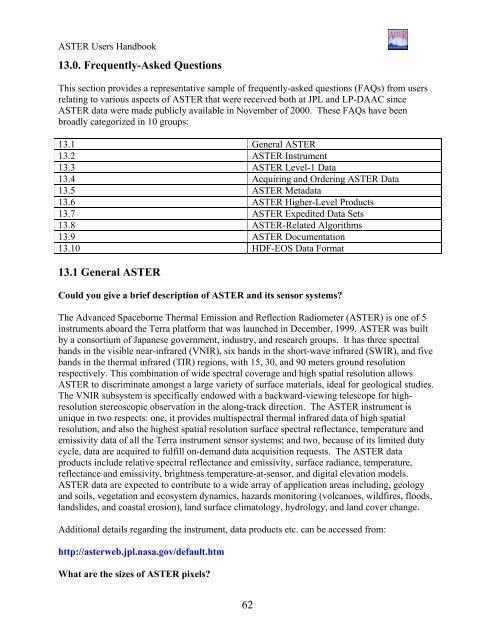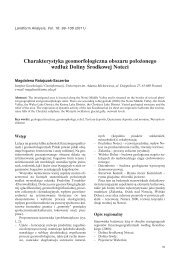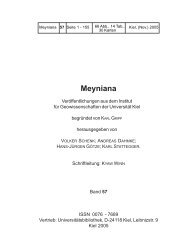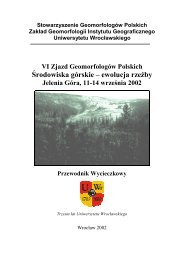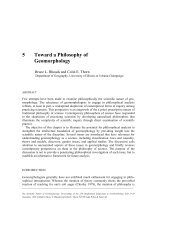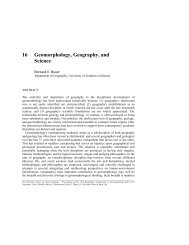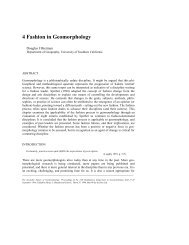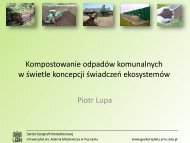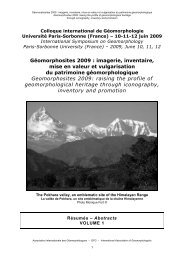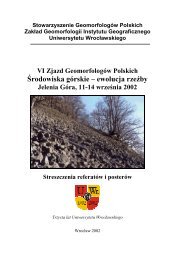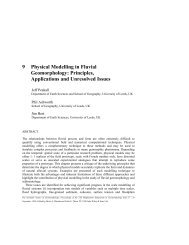ASTER User's Guide - Aster - NASA
ASTER User's Guide - Aster - NASA
ASTER User's Guide - Aster - NASA
Create successful ePaper yourself
Turn your PDF publications into a flip-book with our unique Google optimized e-Paper software.
<strong>ASTER</strong> Users Handbook<br />
13.0. Frequently-Asked Questions<br />
This section provides a representative sample of frequently-asked questions (FAQs) from users<br />
relating to various aspects of <strong>ASTER</strong> that were received both at JPL and LP-DAAC since<br />
<strong>ASTER</strong> data were made publicly available in November of 2000. These FAQs have been<br />
broadly categorized in 10 groups:<br />
13.1 General <strong>ASTER</strong><br />
13.2 <strong>ASTER</strong> Instrument<br />
13.3 <strong>ASTER</strong> Level-1 Data<br />
13.4 Acquiring and Ordering <strong>ASTER</strong> Data<br />
13.5 <strong>ASTER</strong> Metadata<br />
13.6 <strong>ASTER</strong> Higher-Level Products<br />
13.7 <strong>ASTER</strong> Expedited Data Sets<br />
13.8 <strong>ASTER</strong>-Related Algorithms<br />
13.9 <strong>ASTER</strong> Documentation<br />
13.10 HDF-EOS Data Format<br />
13.1 General <strong>ASTER</strong><br />
Could you give a brief description of <strong>ASTER</strong> and its sensor systems?<br />
The Advanced Spaceborne Thermal Emission and Reflection Radiometer (<strong>ASTER</strong>) is one of 5<br />
instruments aboard the Terra platform that was launched in December, 1999. <strong>ASTER</strong> was built<br />
by a consortium of Japanese government, industry, and research groups. It has three spectral<br />
bands in the visible near-infrared (VNIR), six bands in the short-wave infrared (SWIR), and five<br />
bands in the thermal infrared (TIR) regions, with 15, 30, and 90 meters ground resolution<br />
respectively. This combination of wide spectral coverage and high spatial resolution allows<br />
<strong>ASTER</strong> to discriminate amongst a large variety of surface materials, ideal for geological studies.<br />
The VNIR subsystem is specifically endowed with a backward-viewing telescope for highresolution<br />
stereoscopic observation in the along-track direction. The <strong>ASTER</strong> instrument is<br />
unique in two respects: one, it provides multispectral thermal infrared data of high spatial<br />
resolution, and also the highest spatial resolution surface spectral reflectance, temperature and<br />
emissivity data of all the Terra instrument sensor systems; and two, because of its limited duty<br />
cycle, data are acquired to fulfill on-demand data acquisition requests. The <strong>ASTER</strong> data<br />
products include relative spectral reflectance and emissivity, surface radiance, temperature,<br />
reflectance and emissivity, brightness temperature-at-sensor, and digital elevation models.<br />
<strong>ASTER</strong> data are expected to contribute to a wide array of application areas including, geology<br />
and soils, vegetation and ecosystem dynamics, hazards monitoring (volcanoes, wildfires, floods,<br />
landslides, and coastal erosion), land surface climatology, hydrology, and land cover change.<br />
Additional details regarding the instrument, data products etc. can be accessed from:<br />
http://asterweb.jpl.nasa.gov/default.htm<br />
What are the sizes of <strong>ASTER</strong> pixels?<br />
62


